Beethoven’s Symphony No. 9: A Comprehensive Guide
This guide delves into Beethoven’s Symphony No. 9, Op. 125, exploring its availability in PDF format for musicians and enthusiasts. Discover where to access and download scores for study, performance, or personal enjoyment, enhancing your understanding of this monumental work.
Overview of Symphony No. 9, Op. 125
Beethoven’s Symphony No. 9 in D minor, Op. 125, often called the “Choral” symphony, stands as a monumental achievement in classical music. Completed in 1824, it was Beethoven’s final symphony and is celebrated for its innovative inclusion of a choral movement. The symphony integrates Friedrich Schiller’s poem “An die Freude” (“Ode to Joy”), expressing a vision of universal brotherhood.
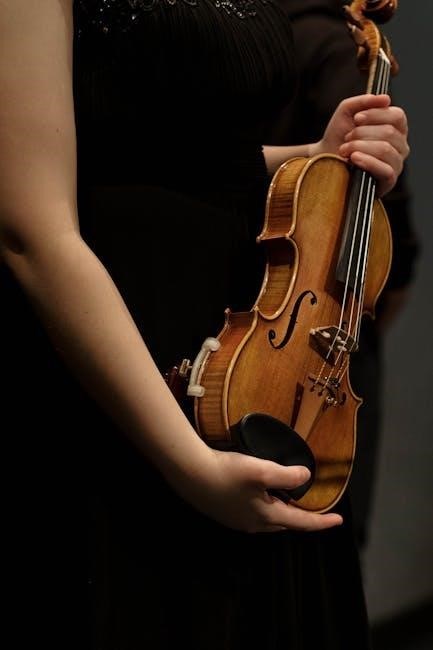
The Ninth Symphony is characterized by its powerful orchestration, complex harmonies, and profound emotional depth. The availability of scores in PDF format has democratized access to this masterpiece, allowing musicians, scholars, and enthusiasts worldwide to study and perform the work. These digital scores often include annotations, historical context, and performance notes, enhancing the understanding and appreciation of Beethoven’s genius. From full orchestral scores to piano reductions, the PDF format enables easy distribution and study of this iconic symphony. Its enduring influence on music and culture makes it a cornerstone of the Western classical canon.
Availability of Scores in PDF Format
The digital age has revolutionized access to musical scores, and Beethoven’s Symphony No. 9 is no exception. Numerous online resources offer scores in PDF format, catering to various needs, from scholarly study to practical performance. Websites like IMSLP (International Music Score Library Project) provide access to public domain scores, including full orchestral scores and individual parts. These resources are invaluable for students, musicians, and researchers seeking to analyze or perform the symphony.
Furthermore, many commercial publishers offer high-quality, digitally remastered scores of Beethoven’s Ninth in PDF format. These editions often include editorial markings, performance notes, and historical context, enhancing the user’s understanding of the work. The convenience of PDF format allows users to easily print, annotate, and share scores, making it an indispensable tool for both individual study and ensemble performance. Whether for academic purposes or personal enjoyment, the widespread availability of Beethoven’s Ninth Symphony in PDF ensures its accessibility to a global audience.
Movements of the Symphony
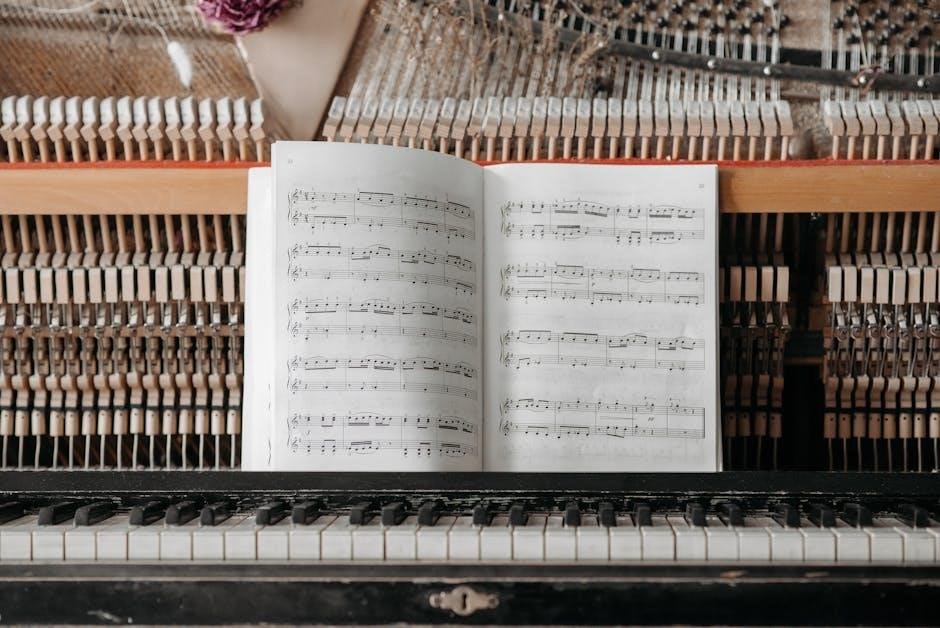
Beethoven’s Symphony No. 9 is structured in four distinct movements, each contributing to the symphony’s overall narrative and emotional impact. The first movement, typically in sonata form, presents the main thematic material and sets the stage for the dramatic journey ahead. The second movement, a scherzo, provides a contrasting, often energetic and playful interlude.

The third movement, usually a slow and lyrical adagio, offers a moment of reflection and emotional depth, showcasing Beethoven’s mastery of melody and harmony. Finally, the fourth movement is the groundbreaking choral finale, featuring Friedrich Schiller’s “Ode to Joy.” This movement combines instrumental and vocal forces in a triumphant expression of universal brotherhood. Each movement contributes uniquely to the symphony’s grandeur, creating a cohesive and profound musical experience. Understanding the structure and character of each movement is essential for appreciating the symphony’s overall artistic achievement.
First Movement: Allegro ma non troppo, un poco maestoso
The first movement of Beethoven’s Ninth Symphony, marked Allegro ma non troppo, un poco maestoso, opens in D minor, establishing a mood of tension and anticipation. The movement’s structure adheres to the sonata form, presenting the exposition, development, and recapitulation of its thematic material. The opening bars create a sense of mystery, with fragmented motifs gradually coalescing into powerful melodies.
The movement is characterized by dynamic contrasts and dramatic shifts in orchestration, showcasing Beethoven’s innovative approach to symphonic writing. Throughout the movement, Beethoven masterfully employs thematic development, transforming and recontextualizing musical ideas to create a sense of continuous evolution and dramatic tension. The “un poco maestoso” indication suggests a majestic quality, highlighting the movement’s grandeur and epic scope. The overall effect is one of profound emotional depth and intellectual complexity, setting the stage for the symphony’s subsequent movements.
Second Movement: Scherzo. Molto vivace
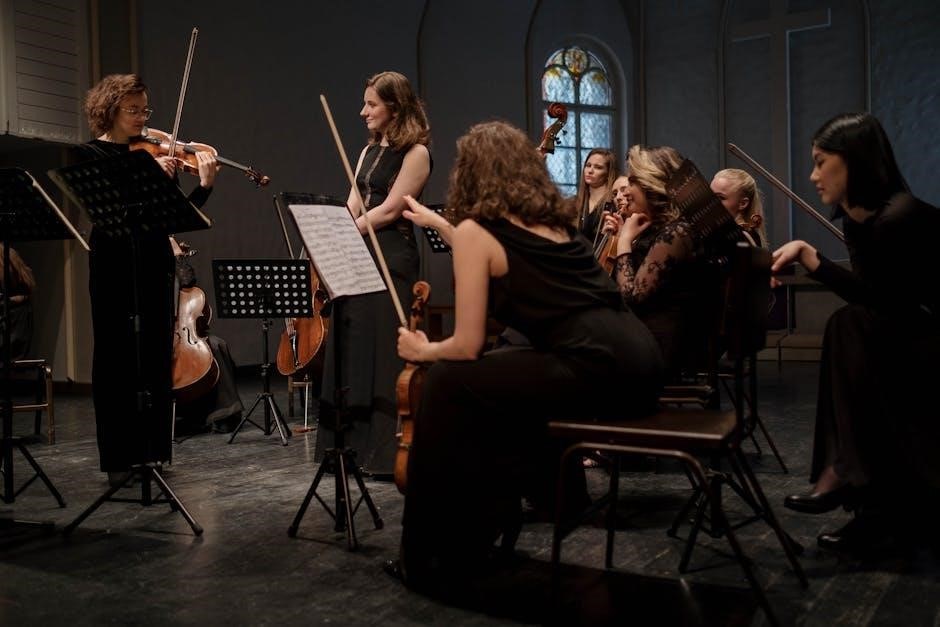
The second movement, a Scherzo marked Molto vivace, bursts forth in D minor, providing a stark contrast to the solemnity of the first movement. The inclusion of a Scherzo as the second movement was itself a new idea, showcasing Beethoven’s innovative spirit. This movement is characterized by its relentless energy and rhythmic drive, propelled by a distinctive timpani pattern.
The Scherzo’s trio section offers a brief respite, featuring a contrasting melody in D major, before the Scherzo returns with renewed vigor. The movement’s brisk tempo and intricate contrapuntal textures create a sense of playful intensity. Beethoven’s use of dynamic contrasts and sudden shifts in orchestration further enhance the movement’s dramatic impact. The Scherzo is a testament to Beethoven’s mastery of rhythm and his ability to create music that is both exhilarating and intellectually stimulating. It underscores Beethoven’s dedication to exploring new ideas, setting it apart from traditional symphonic forms.
Third Movement: Adagio molto e cantabile
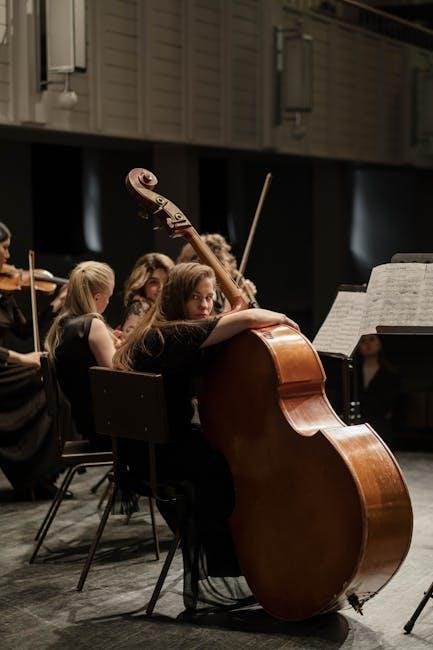
The third movement, marked Adagio molto e cantabile, offers a moment of profound reflection in B♭ major. This movement is a serene oasis, characterized by its lyrical melodies and gentle harmonies, contrasting sharply with the preceding Scherzo’s energy. Beethoven crafts a deeply expressive and emotionally resonant atmosphere, showcasing his mastery of melody and orchestration. The movement unfolds with a sense of peace and tranquility, inviting the listener into a space of introspection.
The Adagio molto e cantabile features two primary themes, each presented with exquisite tenderness and warmth. Beethoven’s use of ornamentation and subtle dynamic variations adds depth and nuance to the melodic lines. The movement’s gentle pacing and flowing phrases create a sense of timeless beauty. The interplay between the strings and woodwinds further enhances the movement’s ethereal quality. This movement is a testament to Beethoven’s ability to evoke a wide range of emotions through his music, offering a moment of solace and contemplation within the grand scope of the Ninth Symphony.
Fourth Movement: Presto (Ode to Joy)
The fourth movement, Presto, introduces the iconic “Ode to Joy,” a triumphant culmination of Beethoven’s symphonic journey. This movement is groundbreaking, incorporating a chorus and vocal soloists for the first time in a symphony. The Presto opens with a turbulent instrumental introduction, gradually building anticipation for the arrival of the “Ode to Joy” theme. The baritone soloist proclaims, “O Freunde, nicht diese Töne!” (“O friends, not these sounds!”), ushering in a new era of unity and brotherhood.
The “Ode to Joy” theme, based on Friedrich Schiller’s poem, celebrates the ideals of universal joy, freedom, and human connection. The melody is simple yet profound, capable of inspiring hope and unity across cultures. Beethoven masterfully weaves the vocal and instrumental forces together, creating a powerful and uplifting sonic experience. The movement progresses through various sections, each exploring different facets of the “Ode to Joy” theme. The symphony culminates in a resounding affirmation of humanity’s potential for peace and harmony. The availability of PDF scores allows for widespread appreciation and performance of this monumental movement.
Historical Significance and Reception
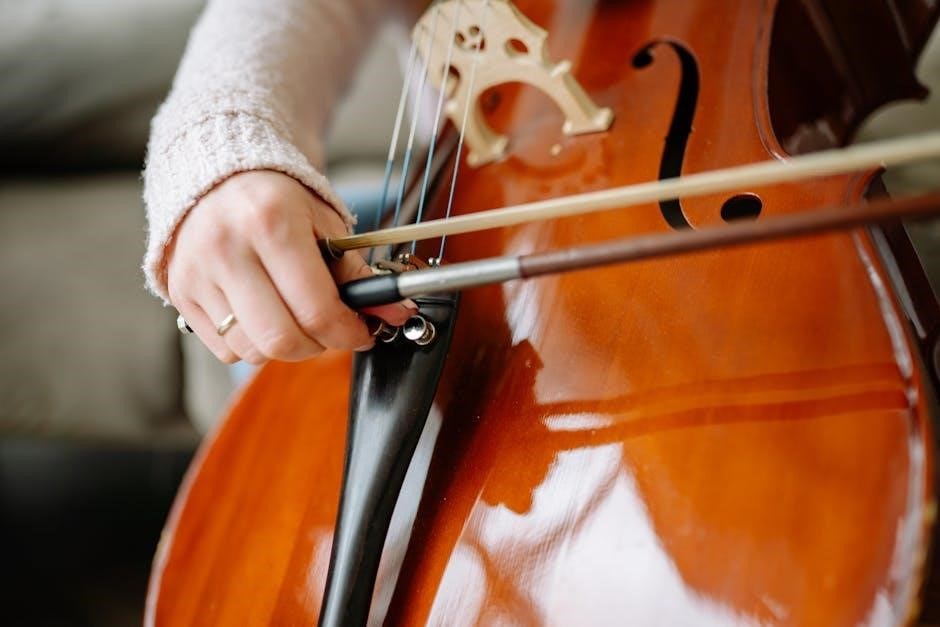
Beethoven’s Symphony No. 9 holds a pivotal place in music history, marking a paradigm shift in symphonic form and expression. Premiering in Vienna in 1824, it was Beethoven’s first appearance on stage in over a decade, adding to the anticipation. The symphony’s integration of vocal elements, particularly the “Ode to Joy” in the fourth movement, was revolutionary, expanding the boundaries of the genre.
The initial reception was enthusiastic, albeit tempered by the challenges of its complexity; Critics and audiences alike were awestruck by its scale and ambition, but some found the vocal finale unconventional. Nevertheless, the symphony quickly gained recognition as a masterpiece, inspiring generations of composers. Its themes of universal brotherhood and joy resonated deeply, solidifying its place as a symbol of human aspiration. The availability of PDF scores has democratized access to this iconic work, enabling scholars, performers, and enthusiasts to study and appreciate its historical and artistic significance. Today, it remains one of the most performed and beloved symphonies globally.
Notable Performances and Recordings

Beethoven’s Symphony No. 9 has inspired countless performances and recordings, each offering a unique interpretation of this monumental work. Early performances faced challenges due to the symphony’s complexity, but its impact was undeniable. Over time, various conductors and orchestras have left their mark on its performance history.
Notable recordings include those by Herbert von Karajan, whose interpretations are renowned for their precision and intensity. Sir Charles Mackerras also offers an acclaimed version, known for its historical awareness. Leonard Bernstein’s performances, marked by passion and drama, are also highly regarded. These recordings and many others provide diverse perspectives on the symphony, highlighting its enduring appeal. The availability of PDF scores has allowed musicians to delve deeper into the music, informing their performances and leading to fresh interpretations. From historic renditions to modern recordings, Beethoven’s Ninth continues to captivate audiences and inspire musicians worldwide, ensuring its place as a cornerstone of classical music.
The Autograph Score and its Location
The autograph score of Beethoven’s Symphony No. 9 represents a vital piece of music history, providing invaluable insights into the composer’s creative process. This handwritten manuscript, penned by Beethoven himself, reveals his revisions, annotations, and original intentions for the symphony. The autograph score, however, is incomplete.
The Staatsbibliothek in Berlin holds the autograph score. This institution ensures its preservation and accessibility for scholarly research. The score’s presence within the library highlights its significance as a cultural artifact. Examination of the autograph score offers a direct connection to Beethoven’s genius. It also sheds light on the symphony’s evolution from conception to final form. Recognizing the score’s historical and artistic importance, it was added to the Memory of the World Programme Heritage in 2001. This designation acknowledges its universal value and promotes its protection for future generations. Access to digital versions and facsimiles of the autograph score has further enhanced its study and appreciation; It allows musicians and scholars worldwide to explore its details without compromising the fragile original.

Analysis of the “Ode to Joy” Theme
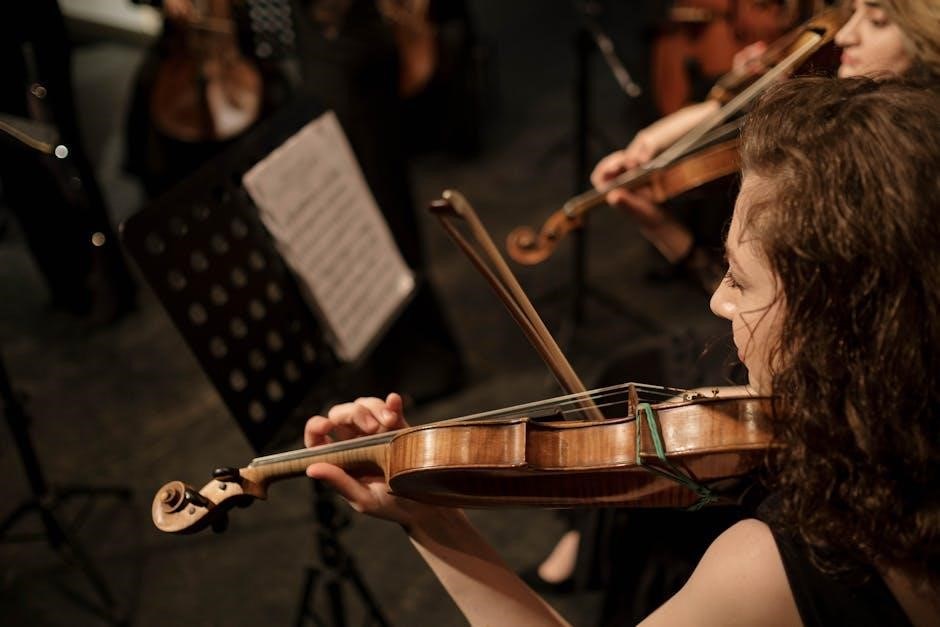
The “Ode to Joy” theme, the crowning glory of Beethoven’s Ninth Symphony, stands as one of the most recognizable and beloved melodies in Western music. This theme, derived from Friedrich Schiller’s poem “An die Freude,” encapsulates a vision of universal brotherhood and joy under divine guidance. Its simplicity and accessibility belie its profound emotional depth and philosophical weight.
Musically, the “Ode to Joy” theme begins with a stepwise ascending melody in D major, creating a sense of hope and optimism. The theme is initially presented in a simple, hymn-like style, gradually building in intensity and complexity as it is developed throughout the fourth movement. Beethoven masterfully employs variations, countermelodies, and orchestrational techniques to explore the theme’s potential. Each iteration of the theme adds new layers of meaning and emotional resonance. The “Ode to Joy” theme’s enduring popularity lies in its ability to evoke feelings of unity, celebration, and spiritual upliftment. It transcends cultural boundaries and continues to inspire audiences worldwide with its message of hope and human connection.
